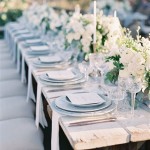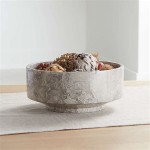How To Decorate an Office at Work
A well-decorated office can significantly impact productivity, creativity, and overall job satisfaction. It can foster a more welcoming and professional environment, boosting both employee morale and client perception. This article offers practical advice on how to effectively decorate an office, taking into consideration professional etiquette and practicality.
Personalizing Your Workspace
Adding personal touches to a workspace can make it feel more comfortable and inviting, leading to improved focus and productivity. However, it's crucial to maintain a balance between personal expression and professional appropriateness. Avoid overly personal or potentially offensive items. Photos of family and friends, inspirational quotes, and small decorative objects can add a touch of personality without compromising professionalism. Plants are also a great addition, bringing a touch of nature into the workspace and proven to improve air quality and reduce stress.
Consider the overall aesthetic when selecting personal items. Choose a cohesive color scheme or theme to create a visually appealing and organized look. Avoid clutter by utilizing storage solutions such as drawers, shelves, and organizers. A clean and organized workspace promotes a sense of calm and efficiency.
Ergonomics and Functionality
While aesthetics are important, functionality and ergonomics should be the primary focus when decorating an office. An ergonomically sound workspace promotes comfort and prevents physical strain, contributing to long-term health and well-being. Invest in a comfortable and supportive chair that promotes good posture. Ensure the desk is at the correct height to avoid wrist and back pain. Proper lighting is also crucial. Natural light is ideal, but supplemental task lighting can help reduce eye strain and improve focus.
The placement of equipment should also be considered. Position frequently used items within easy reach to minimize unnecessary movement. Cable management solutions can help keep wires tidy and prevent tripping hazards. A well-organized and functional workspace promotes efficiency and reduces distractions.
Color Psychology and Office Decor
Color plays a significant role in influencing mood and productivity. Understanding the psychological effects of different colors can inform design choices and create a more conducive work environment. Blue is often associated with calmness and focus, making it a popular choice for offices. Green is known for its calming and stress-reducing properties. Yellow can stimulate creativity and optimism. However, it's essential to use bright colors sparingly to avoid overstimulation.
Neutral colors like white, gray, and beige provide a clean and professional backdrop. They can be paired with accent colors to create visual interest without being overwhelming. Consider the company's branding and overall aesthetic when choosing a color scheme. The color palette of the office should align with the company's image and values.
Wall Decor and Artwork
Strategically chosen artwork and wall decor can significantly enhance the office environment. Motivational posters, framed prints, or even a vibrant tapestry can add personality and inspire creativity. Consider using wall space to showcase company achievements or display inspiring quotes related to the industry. Avoid overly personal or controversial artwork. The goal is to create a professional and welcoming atmosphere that reflects the company culture.
When selecting artwork, consider the size and scale of the room. Large pieces can make a bold statement, while smaller pieces can be grouped together to create a gallery wall. Ensure the artwork is appropriately framed and hung securely. Well-chosen artwork can elevate the office aesthetic and create a more engaging workspace.
Storage and Organization
A cluttered workspace can negatively impact productivity and focus. Implementing effective storage solutions is crucial for maintaining a clean and organized office. Utilize drawers, shelves, and filing cabinets to store documents and supplies. Desk organizers can help keep frequently used items within easy reach. Consider using vertical space to maximize storage potential.
Labeling systems can also help keep things organized and easy to find. Clearly labeled drawers and shelves can save time and reduce frustration. Regularly decluttering the workspace can prevent the accumulation of unnecessary items and maintain a tidy and efficient work environment. A clean and organized office promotes a sense of calm and control, contributing to improved focus and productivity.

4 Ideas For Decorating Your Workspace

15 Ways To Uniquely Decorate Your Office Desk Chairoffice

How Not To Decorate Your Desk Journey

How To Decorate A Corporate Office

4 Ideas For Decorating Your Workspace

15 Ways To Uniquely Decorate Your Office Desk Chairoffice

Surprising Benefits Of Decorating Your Office At Work

How To Decorate A Corporate Office

Cubicle Decor Ideas To Improve Your Work Environment

Decorate Your Home Office So You Can Work All Day








